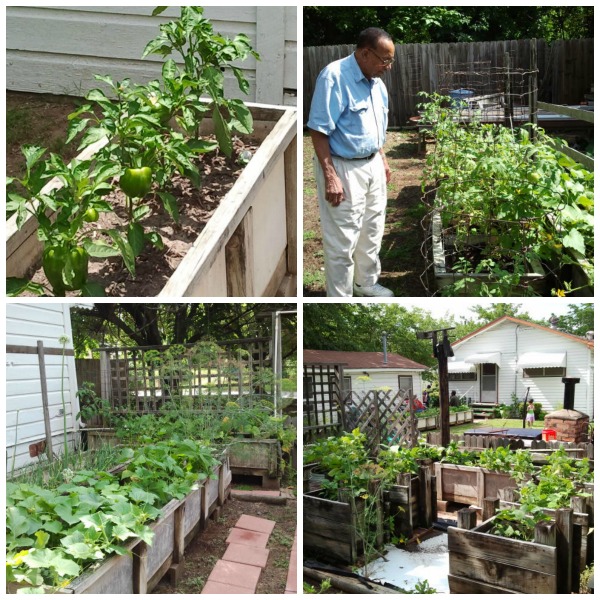
Grow it in a Container!
I have been doing some sort of container gardening for years. I have memories as a child pulling weeds from our in-the-ground family garden. I was so glad when Dad decided to build all types of container gardens all over our yard. It was not unusual to see a flower growing in the same pot as something good to eat. One of the things I learned early is that food can be grown in just about any type of container, and it does not have to be fancy or expensive. It does however need good drainage. Another thing my dad taught me is that when you drill a hole for your container, you should drill your hole on the side of your pot near the bottom instead of in the bottom of your pot. That will ensure that no weeds or other plants will grow in the bottom of your pot.
Check out what my dad grows in along with the wooden containers he built. We’re talking laundry baskets, tubing, the bottoms of those big water bottle dispenser, and he kept an old bathtub that was removed from the house and turned it into a place to grow food.
- Make sure your container has proper drainage. The minimum size holes you drill should be about 1/2 inch in diameter for small to medium pots For larger sized containers, look for at least an inch in diameter.
- It is a total myth that adding gravel, pot shards or stones to the bottom of your container garden, you will increase drainage. Some people even say you don’t need drainage holes if you put these things in the bottom of your pots. Putting gravel into the bottom of pots reduces the capacity of potting soil to drain. The problem is that water flows through similar textures and when it hits a different texture, gravel for example, the flow stops and the water backs up into the soil.
- Container gardening requires frequent watering and during the summer months, your containers may need watering twice a day – that’s certainly the case in Texas!
- Pay close attention to plans made of clay or other unglazed pottery. Porous containers tend to try out more quickly than other materials.
- Almost any kind of plant is suitable for container gardening; the depth of the root length, however, will determine how large a container is required. Plants for container gardening that will extend to long root depths, such as trees will need deeper containers, whereas shorter root length plants will do fine with more shallow containers.
- Adequate sunlight is essential to any successful garden, and container gardening is no different. Keep in mind you may need to move your plants from one location to another in order to follow the path of sunlight. It may be beneficial for you to place heavier containers on castors in order to facilitate moving more easily. Know how much sun your plants may need.
- Mixing and matching plants for the purpose of container gardening is quite popular and can produce glorious results. When selecting plants to place together in your container, however, keep annuals and more permanent plants separated.
Learning how to garden in containers is not hard. It does require a little TLC but no weed pulling, digging or getting on your hands and knees in order to work your garden.
So why not give container gardening a try. Start small and let me know how it goes.
Happy Container Gardening!


0 Comments
Write a Comment